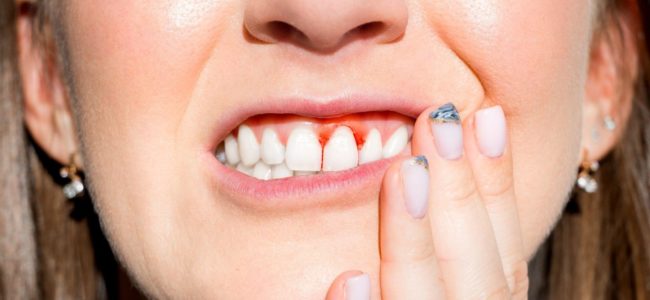Does Gingivitis Hurt?
Tooth and gum pain can range from mild to severe, and a number of things can cause the pain. While most people assume their tooth pain is related to a cavity, cracked tooth, or food stuck between their teeth, something else could be causing your oral discomfort. One of the common causes of pain in the mouth can be gingivitis, which is the earliest and mildest form of gum disease.
While no one wants to hear that they have gingivitis, it’s actually quite common — but there is a lot you can do to combat it. If gingivitis is the cause of your mouth pain, you are not alone. Around 50% of American adults suffer from gum disease at some point in their lives. Luckily, with good oral care and regular dental cleanings, gingivitis is treatable and, in some cases, even reversible!
What Is Gingivitis And Why Does It Hurt?
Gingivitis is the earliest stage of gum disease and is most commonly caused by poor oral hygiene. Inadequate brushing and flossing, or simply not brushing or flossing enough can lead to gingivitis over time. Bad dental hygiene causes a plaque build-up around the gum area (known as the gingiva) at the base of your teeth. When plaque sits long enough on the teeth, it can turn into tartar, which is like a callus under your gum line. Slowly, tartar will collect bacteria and begin to irritate the gums.
The longer the tartar builds up and continues to collect bacteria, the worse the infection will become. For many, this can cause mild to severe mouth pain.
If left untreated, gingivitis can lead to periodontitis, which is irreversible and requires lifelong management.
What Are The Symptoms Of Gingivitis?
Aside from mouth pain, there can be several ways to recognize gingivitis. Some other symptoms include the following:
- Bleeding gums, particularly when brushing
- Bad breath
- Darkening gum color (usually a darker red)
- Loose teeth
- Receding gum line
If you are experiencing any of these symptoms, it is important to reach out to your dentist sooner rather than later.
Treatments For Pain Caused By Gingivitis
If you suspect gingivitis is the cause of your gum pain, it is important to act quickly. Getting a professional cleaning, diagnosis, and treatment plan is a great way to get started.
Additionally, changes to your oral hygiene routine can have a positive effect on gingivitis symptoms. Begin by committing to brushing your teeth twice every day. Do so with a soft brush that won’t irritate your gums but will thoroughly clean them and your teeth. You might opt for a specialized toothpaste that can help with gum sensitivity. You should also be flossing daily, and a water flosser can be another great supplement to improve the health of your gums.
Rinsing with an antiseptic mouthwash can also help cleanse and refresh your gums gently, and doing this can reduce the bacteria in your mouth that is contributing to your gingivitis and discomfort.
It is important to note that if you are a smoker, cutting out smoking can also help decrease the chance of gum pain caused by gingivitis and can help speed up healing after a gingivitis diagnosis.
If you find you have a more advanced or aggressive gum disease, there are still many options your dentist may recommend, from oral antibiotics to dental surgery in more severe cases. If you feel like your change in dental hygiene habits is not enough, be sure to talk to your dentist about alternative treatment options or how you can speed up the healing process.
